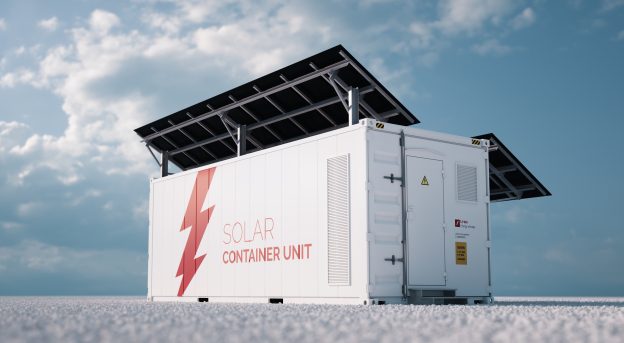In 2023, as the costs of solar and energy storage decline, the European market for large-scale energy storage is progressively expanding, witnessing a continuous uptrend in the scale of projects. According to forecasts by Wood Mackenzie, the cumulative installed capacity for large-scale energy storage in Europe is expected to reach 42GW/89GWh by 2031. Notably, the United Kingdom takes the lead in large storage installations across Europe, projecting an impressive 25.68GWh by 2031. Furthermore, a substantial surge in the UK's large-scale energy storage is anticipated in 2024. The growth in renewable energy installations, the establishment of a robust revenue model, and other contributing factors will further propel the development of large-scale energy storage in Europe.
A driving force behind this trend is the robust demand and the ongoing implementation of power reforms.
The United Kingdom’s large-scale energy storage sector is poised for rapid expansion.
The necessity for power supply improvement and enhanced grid stability in the UK creates significant potential for the development of large-scale energy storage. Being an island nation, Britain faces limitations in power supply capacity and grid flexibility compared to other European countries.
On one hand, the phased-out coal power has left a void in the UK's power supply, resulting in a heightened reliance on imported power. On the other hand, renewable energy sources like wind and photovoltaic systems impact the grid, significantly raising the cost of balancing the UK power system. Consequently, during congested hours, the UK is compelled to purchase balancing power from countries like France and Belgium at steep prices.
Projections for New Installations of Energy Storage in the UK for 2024

However, a pivotal change occurred on July 19, 2023, when the European Parliament officially endorsed the Electricity Market Design Reform Programme. This initiative encourages countries to integrate more non-fossil-fueled flexibility resources into the grid, such as energy storage and demand-side response. It also aims to ensure that suppliers receive a reasonable return on investment. As the pursuit of carbon neutrality intensifies, along with the need to augment power supply capacity and enhance grid stability, the United Kingdom is actively promoting the construction of large-scale energy storage systems for renewable energy development. This proactive approach ensures robust support for the integration of renewable energy on a large scale into the power systems.
The UK’s energy storage sector has experienced consistent growth, thanks to a mature business model.
According to Modo statistics, the cumulative installed capacity of large-sized energy storage in the UK has surged from 0.01GW in 2016 to an impressive 1.93GW by the end of 2022. Projections indicate that by the close of 2026, the cumulative installed capacity for local large-sized energy storage in the UK is expected to reach 13GW. Furthermore, over the next four years, the average annual addition to the installed capacity will be no less than 2.77GW. Considering a two-hour allocated energy storage time, the annual new installed capacity is anticipated to be no less than 5.5GWh. The UK's power market, marked by a high degree of liberalization, has laid the groundwork for a robust revenue mechanism in the energy storage sector. The revenue mechanism for energy storage power plants in the UK is diverse, boasting over 10 revenue streams for Energy Storage Systems (ESS). These range from participating in the lucrative FM service market and standby market to contributing value to the energy market. Large-scale energy storage projects can generate profits by being part of the capacity market, electricity market, balancing standby, and FM auxiliary services market.
Backed by robust project reserves, the UK stands at the forefront of the European large-sized energy storage market.
The ongoing decrease in the cost of energy storage systems is contributing to a reduced construction cost for UK energy storage power stations, further boosting the economic viability of large-scale storage projects. Looking at Europe as a whole, the region has taken the lead in setting a carbon-neutral target for 2025, underscoring the imperative nature of the energy transition. Numerous large-scale energy storage planning projects are in progress across Europe. According to statistics from the European Energy Storage Association (EASE) in 2022, the new installed capacity of energy storage in Europe reached 4.5GW, with large-sized energy storage accounting for 2GW. Breaking it down by regions, the UK market claimed 42% of the large-sized energy storage installations in Europe, solidifying its position as the largest market in this category.
Furthermore, Solar Media data reveals that by the end of 2022, the UK had 20.2GW of large-sized energy storage projects approved, slated for completion within the next 3 to 4 years. Additionally, planned or deployed energy storage systems amount to an impressive 61.5GW, indicating substantial potential for growth. The demand for large-sized energy storage systems stems from the need for flexible resources brought about by the integration of renewable energy into the grid. As per REPower EU, the 2030 goal is to have renewable energy installed capacity make up 45% of the total, driving continuous growth in both European renewable energy and large-sized energy storage installed capacities.







